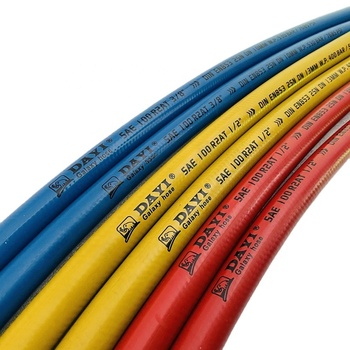335345435
Oct . 21, 2024 15:26 Back to list
Flexible Rubber Hose for Efficient Water Suction and Discharge Applications
Water Suction and Discharge Rubber Hose An Essential Component in Fluid Management
In today's rapidly evolving industrial landscape, effective fluid management is crucial for a variety of applications. One of the most versatile and widely used tools for transporting liquids is the water suction and discharge rubber hose. This essential piece of equipment is designed to handle everything from potable water to industrial waste, making it a staple in agriculture, construction, mining, and more.
Understanding Water Suction and Discharge Hoses
Water suction and discharge hoses are specifically engineered to manage both the intake (suction) and output (discharge) of water and other fluids. The construction of these hoses is pivotal to their performance; they are typically made from high-quality rubber materials that provide flexibility, durability, and resistance to environmental factors. This rubber composition allows the hoses to maintain their integrity in various conditions, from extreme temperatures to exposure to potential corrosive elements.
The basic design of a water suction and discharge hose includes a reinforced structure that enhances strength and prevents collapse during suction. This reinforcement often comes in the form of synthetic fabric or steel coils, which help to maintain the hose's shape and deliver a consistent flow rate. Additionally, the smooth inner lining of these hoses minimizes friction, allowing fluids to flow more freely and efficiently.
Key Features and Specifications
When selecting a water suction and discharge rubber hose, several features should be considered. First, the hose’s diameter is crucial as it needs to match the requirements of the application, whether it involves transferring large volumes of water or small-scale operations. Common diameters range from 1 inch to over 6 inches, accommodating various industrial needs.
Secondly, these hoses are available in different pressure ratings, measured in pounds per square inch (PSI). A higher pressure rating indicates a capability to withstand greater force, making it suitable for more demanding applications. For instance, a construction site might require hoses that can handle both high-pressure discharge and a robust suction capacity for dewatering purposes.
water suction and discharge rubber hose

Moreover, the temperature range is also a significant factor; most water suction and discharge hoses can operate efficiently under temperatures ranging from -20°F to 180°F. This broad temperature tolerance ensures that these hoses can be used in almost any environment, from frozen lakes in winter to hot asphalt in summer.
Applications of Water Suction and Discharge Rubber Hose
The applications of water suction and discharge hoses are vast and varied. In the agricultural sector, they are used for irrigation, transporting water from reservoirs to fields. In construction, these hoses serve a vital role in dewatering sites, ensuring that foundations remain dry and safe for heavy machinery. Furthermore, in the mining industry, they facilitate the transfer of water in various processes, from dust control to mineral processing.
Additionally, these hoses find use in emergency scenarios, such as flood management, where rapid water removal is necessary to protect property and lives. Firefighters also rely on these hoses to transport water quickly to extinguish flames in emergency situations.
Maintenance and Care
To ensure longevity and optimal performance, proper maintenance of water suction and discharge hoses is crucial. Regularly inspecting hoses for signs of wear, such as cracks or bulges, can prevent failures. It is also essential to clean the hoses thoroughly after use, especially when transporting contaminants or chemicals, to avoid corrosion and damage.
In conclusion, water suction and discharge rubber hoses are indispensable tools in fluid management across numerous industries. Their robust construction, versatility, and ability to handle various applications make them an essential choice for professionals seeking reliable fluid transport solutions. As industries continue to evolve, the demand for effective water management solutions will only increase, solidifying the role of these hoses as critical components in fluid dynamics.
-
High-Quality Distribution PTFE Hose for Industrial Flexibility
NewsJul.23,2025
-
Durable Pressure Washer Rubber Hose for Hot Water & High Flexibility
NewsJul.22,2025
-
Twin Hydraulic Hose for Efficient Fluid Transfer | Durable & Flexible
NewsJul.22,2025
-
Twin Hydraulic Hose | High Pressure & Durable
NewsJul.21,2025
-
Discount Hydraulic Hose Factories | Top Quality & Discounts
NewsJul.20,2025
-
EN856 4SP Hydraulic Hose - High Pressure & Durable
NewsJul.20,2025



